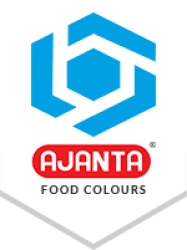_1759126238.jpg)
For manufacturers in the food, beverage, cosmetics, and pharmaceutical industries, choosing the right colour is very crucial because it is not just about a technical decision but also directly impacts the visual appeal, consumer trust, and long-term profit. While many businesses look for cost savings, the balance between cost and quality can determine whether a product succeeds in the market or fails to meet industry standards.
This article explores how manufacturers can approach the cost vs. quality dilemma when selecting synthetic food colours, helping them make informed decisions that support both production efficiency and brand reputation.
Why Cost Matters for Manufacturers
In a competitive market, keeping production costs under control is crucial. Raw materials, packaging, logistics, and regulatory compliance already add significant expenses. For many manufacturers, synthetic food colours are one of the most flexible areas where cost-cutting seems possible.
Bulk purchasing pressures: High-volume production often pushes manufacturers to seek cheaper colourant options.
Pricing competition: Low-cost products in the market encourage businesses to reduce input costs.
Export competitiveness: Manufacturers who are targeting global markets may face cost pressures to remain attractive to buyers.
Cost plays a crucial role in product sales, but overcompromising with price may lead to various long-term risks.
Why Quality Cannot Be Overlooked
The appearance, safety, and stability of any product depend on the type of synthetic food colours that are used in the product. Although the short-term profit of using poor-quality food colours and non-compliant colours might appear beneficial for manufacturers, the long-term consequences of using such colours could hurt the reputation of the products, which, in turn, leads to a greater loss.
Poor stability: Low-quality colours often fade or change on products over time, which makes the product ugly. These colours also impact the taste of the product, which damages the brand's reputation in the market.
Regulatory compliance: Low-quality colours do not fulfill all the regulatory standards set by the governmental bodies of the country, such as the FDA, EFSA, and FSSAI. This may risk the reputation of the brand in the market, which leads to recalls or bans of the product.
Brand reputation: Consumers often associate dull or inconsistent colours with low-quality products.
Safety risks: These inferior quality colours are not tested and approved by the government bodies, which often contain pollutants that affect the health of consumers. This may lead to legal issues and reputational damage to the brand.
In the food, cosmetics, and pharmaceutical manufacturing industry, a minor change in colour shade can raise questions about the authenticity and regulatory compliance of products.
Striking the Right Balance Between Cost and Quality
It is not a smart approach to choose one colour over the other, manufacturers try to balance the cost and quality strategically.
Work with Certified Suppliers
Manufacturers should choose a synthetic food colour manufacturer that provides globally approved colours, which helps them to export their products in the international market without any legal issues.
Consider Long-Term Value, Not Just Price
A slightly higher investment in high-quality synthetic colours can save costs on rejections, recalls, and reformulations. You should always look at the total value, not just the per-unit price.
Test Colours in Final Applications
Manufacturers should always try to test the colours in a real product environment before purchasing them from any colour supplier. It helps them to choose the most accurate colour for their products. Testing for stability in beverages, heat stability in baked products, and consistency over time in packaged products are all necessary.
Negotiate Smartly with Suppliers
Always try to negotiate with the colour supplier before colour purchase because many suppliers often provide bulk discounts, technical support, and formulation guidance for bulk colour orders. This makes the final products affordable for customers. Plus, building long-term partnerships with colour suppliers usually proves more cost-effective for manufacturers.
Align Colours with Market Needs
Manufacturers invest more heavily in the premium quality products to justify the pricing of the products. However, when they manufacture mass-market products, they always try to maintain the affordability, visual appeal, and safety of the product.
Key Takeaways for Manufacturers
- Low cost may look attractive initially, but it often results in higher long-term risks.
- Quality synthetic colours build trust, compliance, and product consistency.
- Certified suppliers are effective in maintaining the balance between cost and quality.
Conclusion
The real question for manufacturers is not prioritising the quality or cost, it's how to balance both quality and cost of the product, because on these the sales of the product are dependent. Synthetic food colours are not just colour additives; they are a reflection of a brand’s promise to its customers. Manufacturers can achieve both affordability and excellence by purchasing these colours from a reputed and trusted manufacturer of synthetic food colours like Ajanta Food Colours.
Ajanta Food Colours is a leading synthetic food colour manufacturer in India that manufactures high-quality, premium synthetic food colours for a wide range of products such as food, cosmetics, pharmaceuticals, pet food, and personal care products. For the quality and affordability of its colourants, Ajanta received various awards and certificates from India and from other countries where Ajanta exports its synthetic food colours.
To know more about Ajanta Food Colours, or its colour range, please contact us today!




